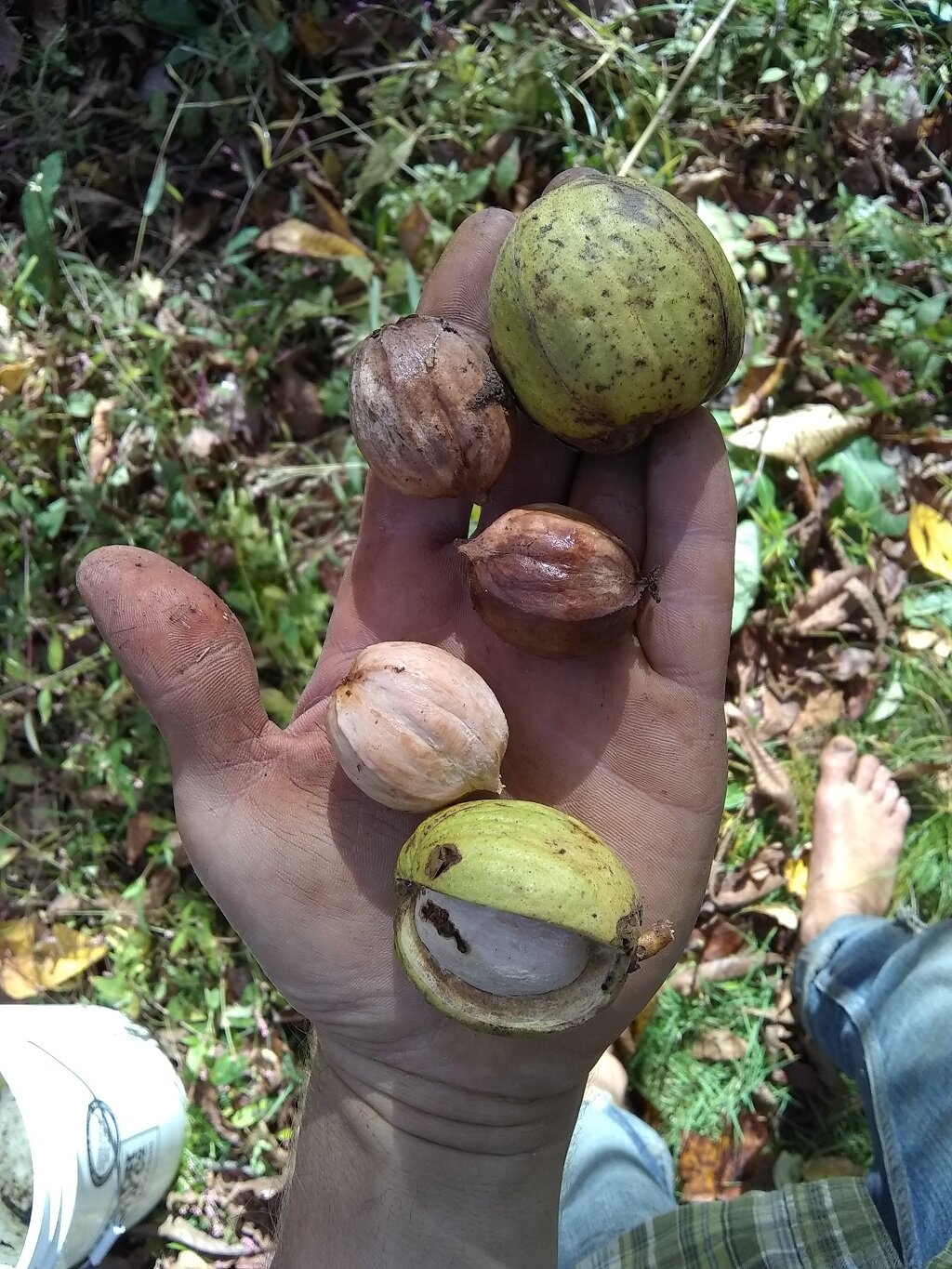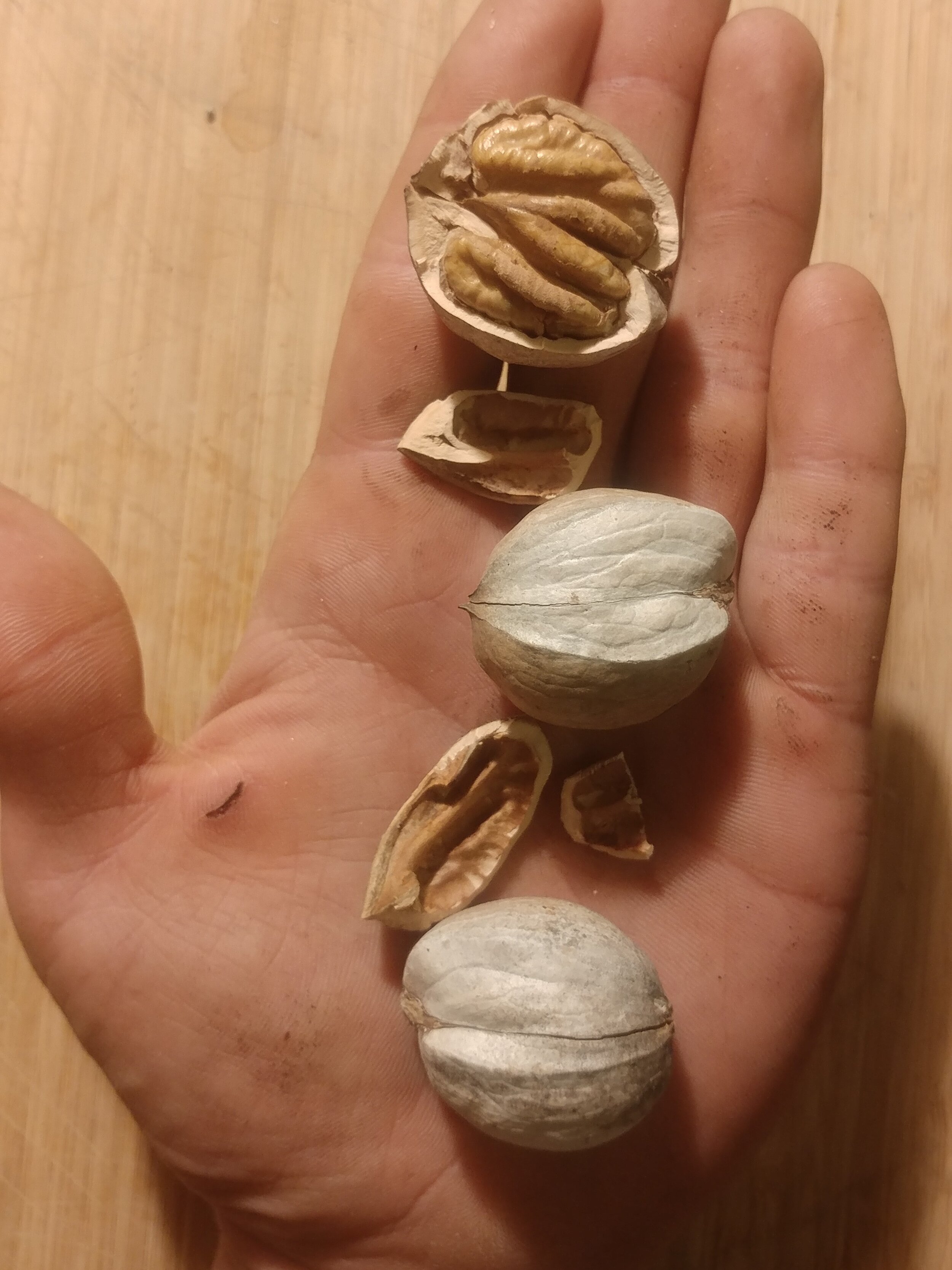 Image 1 of 5
Image 1 of 5

 Image 2 of 5
Image 2 of 5

 Image 3 of 5
Image 3 of 5

 Image 4 of 5
Image 4 of 5

 Image 5 of 5
Image 5 of 5






Shellbark Hickory
Shellbark hickory, also known as Kingnut Hickory. This majestic denizen of valley forests and savannas in the east makes the largest hickory nut in North America — in fact, it is the largest native nut in North America. The nut carries a rich flavor and the timber makes for a stately tree.
These seedlings of shellbark hickory are grown from the best cultivar genetics in terms of crackability, size, flavor, productivity, etc., for their species. Most are from open-pollinated nuts from all-grafted cultivar orchards, or from outstanding wild trees.
Select from the choices below, or choose Assorted Bundles to receive a diverse mix of good genetics.
Fayette seedlings – name-sake variety from Fayette Etter. One of the best shellbark varieties known and tested, and also proven to make good seedlings with potential to be as good or better than the parent.
Hoffeditz seedlings – variety from Fayette Etter.
Henry seedlings – variety from Fayette Etter of PA. Large nut, very high productivity (lateral bearing), and high-weevil resistance.
Keystone seedlings — Fayette Etter loved this nut so much he named it Keystone, to represent his state of Pennsylvania. Among the best of the best for shellbark hickory, although recent genetic testing reveals this to be a shellbark backcross, being roughly 75% shellbark and 25% shagbark.
Stauffer seedlings – variety from Fayette Etter of PA.
Stephens seedlings – very large cultivar nut from Missouri.
Longenecker seedlings – variety introduced by Miles Nolt, Lancaster county PA. Large nut that cracks beautifully and tree is productive. Weevil-resistance seems to be low.
Parker seedlings – this is a seedling of Longenecker from Parker Coble, Adams County PA. Nut is similar to Longenecker, with broader shoulders.
Shellbark hickory, also known as Kingnut Hickory. This majestic denizen of valley forests and savannas in the east makes the largest hickory nut in North America — in fact, it is the largest native nut in North America. The nut carries a rich flavor and the timber makes for a stately tree.
These seedlings of shellbark hickory are grown from the best cultivar genetics in terms of crackability, size, flavor, productivity, etc., for their species. Most are from open-pollinated nuts from all-grafted cultivar orchards, or from outstanding wild trees.
Select from the choices below, or choose Assorted Bundles to receive a diverse mix of good genetics.
Fayette seedlings – name-sake variety from Fayette Etter. One of the best shellbark varieties known and tested, and also proven to make good seedlings with potential to be as good or better than the parent.
Hoffeditz seedlings – variety from Fayette Etter.
Henry seedlings – variety from Fayette Etter of PA. Large nut, very high productivity (lateral bearing), and high-weevil resistance.
Keystone seedlings — Fayette Etter loved this nut so much he named it Keystone, to represent his state of Pennsylvania. Among the best of the best for shellbark hickory, although recent genetic testing reveals this to be a shellbark backcross, being roughly 75% shellbark and 25% shagbark.
Stauffer seedlings – variety from Fayette Etter of PA.
Stephens seedlings – very large cultivar nut from Missouri.
Longenecker seedlings – variety introduced by Miles Nolt, Lancaster county PA. Large nut that cracks beautifully and tree is productive. Weevil-resistance seems to be low.
Parker seedlings – this is a seedling of Longenecker from Parker Coble, Adams County PA. Nut is similar to Longenecker, with broader shoulders.